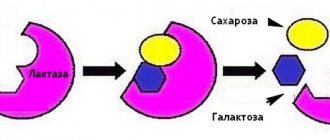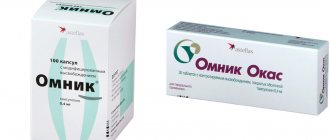Concept
Radiation therapy involves exposure to ionized radiation. His goals:
- damage to malignant cells,
- limiting cancer growth,
- prevention of metastasis.
Used in combination with surgical treatment and chemotherapy.
During radiation exposure, cells do not disintegrate, but their DNA changes. The advantage of the method is that healthy structures do not undergo any changes.
The effect is enhanced due to the fact that the doctor can adjust the direction of the rays. This makes it possible to use maximum doses at the lesion site.
Sometimes this method is also used to treat non-oncological pathologies. For example, to combat bone growths.
Video about pre-radiation preparation:
Side effects
Radiation therapy in oncology, the consequences of which a person feels for a long time, can still save lives.
Each person's response to radiation therapy is individual. Therefore, all the side effects that may occur are very difficult to predict. We list the most common symptoms:
- Decreased appetite. Most patients complain of poor appetite. In this case, it is necessary to eat in small quantities, but often. The issue of nutrition in case of lack of appetite can be discussed with your doctor. The body undergoing radiation therapy needs energy and nutrients.
- Nausea. One of the main reasons for decreased appetite is nausea. Most often, this symptom can be found in patients who undergo radiation therapy in the abdominal cavity. In this case, vomiting may occur. The doctor must be informed of the situation immediately. The patient may need to be prescribed antiemetics.
- Diarrhea. Diarrhea often occurs as a result of radiation therapy treatment. If diarrhea occurs, you should drink as much fluid as possible to prevent dehydration. This symptom should also be reported to your doctor.
- Weakness. During the course of radiation therapy, patients significantly reduce their activity, experiencing apathy and feeling unwell. Almost all patients who have undergone radiation therapy face this situation. Particularly difficult for patients are visits to the hospital, which must be made periodically. During this period of time, you should not plan activities that take away physical and moral strength; you should leave maximum time for rest.
- Skin problems. 1-2 weeks after the start of radiation therapy, the skin exposed to radiation begins to turn red and peel. Sometimes patients complain of itching and pain. In this case, you should use ointments (on the recommendation of a radiologist), Panthenol aerosol, creams and lotions for the care of children's skin, and avoid cosmetics. Rubbing irritated skin is strictly prohibited. The area of the body where skin irritation occurred should be washed only with cool water, temporarily refusing to take baths. It is necessary to rid the skin of direct sunlight and wear clothes using natural fabrics. These actions will help relieve skin irritation and reduce pain.
Reduced side effects
After completing a course of radiation therapy, the doctor will give recommendations on how to behave at home, taking into account the specifics of your case, in order to minimize side effects.
Anyone who knows what radiation therapy is in oncology also understands the consequences of this treatment well. Those patients who are being treated with radiation therapy for a tumor disease should adhere to the doctor's recommendations, promoting successful treatment and trying to improve their well-being.
Basic recommendations:
- Spend more time on rest and sleep. Treatment requires a lot of extra energy and you may become tired quickly. The state of general weakness sometimes lasts another 4-6 weeks after the treatment is completed.
- Eat well while trying to prevent weight loss.
- Do not wear tight clothing with tight collars or belts in areas exposed to radiation. It is better to prefer old suits in which you feel comfortable.
- Be sure to tell your doctor about all the medications you are taking so that he or she can take this into account when treating you.
Indications
The method is used in 60-70% of patients with cancer. It is considered the main treatment for tumors that are characterized by a high degree of radiosensitivity, rapid progression, and also with certain features of the localization of the formation.
Radiation therapy is indicated for cancer:
- nasopharynx and rings of pharyngeal tonsils,
- cervix,
- larynx,
- skin, breast,
- lung,
- language,
- body of the uterus,
- some other organs.
How radiation therapy helps preserve the organ and its functions
There are many examples of how radiation therapy helps preserve organ function and improve the quality of life of patients. For example, for rectal cancer, radiation therapy before surgery allows you to reduce the tumor and conduct more gentle surgical treatment, without forming a colostomy. Another example is head and neck tumors. Previously, they were treated only surgically. In case of a stage three laryngeal tumor, the organ had to be completely removed with the formation of a permanent tracheostomy. This operation is psychologically difficult for patients. They are deprived of the opportunity to speak or fully communicate. Modern radiation therapy allows you to avoid surgery and recover with a minimum of side effects.
Types of radiation therapy
There are several treatment methods. Alpha radiation involves the use of isotopes, such as radon, thoron products. This type has a wide range of applications; it has a positive effect on the central nervous system, endocrine system, and heart.
Beta therapy is based on the healing effect based on the action of beta particles. Various radioactive isotopes are used. The decay of the latter is accompanied by the emission of particles. There is such therapy as interstitial, intracavitary, or application.
X-ray therapy is effective for the treatment of superficial lesions of the skin and mucous membranes. The X-ray energy is selected depending on the location of the pathological focus.
Radiation therapy is also divided for other reasons.
Contact
This type differs from the others in that the ray sources are located directly on the tumor. It is characterized by a dose distribution so that the main part remains in the tumor.
The method is good if the size of the formation is no more than 2 cm. This type is divided into several types.
| Name | Peculiarities |
| Close focus | Irradiation affects the cells themselves. |
| Intracavity | The radiation source is introduced into the body cavities. It remains throughout the course of contact radiotherapy. |
| Interstitial | The radiation source is injected into the tumor. The impact occurs in a continuous mode. |
| Radiosurgery | Rays are exposed after surgery. The area where the tumor was located is exposed to radiation. |
| Appliqué | The radiation source is applied to the skin using a special applicator. |
| Selective accumulation of isotopes | Low-toxic radioactive substances are used. |
Remote
It implies that the source of radiation is located at some distance from the human body. the beam enters the body through a certain area.
Gamma therapy is most often used. This method is good because it allows a high dose of radiation to be applied to the formation, while keeping healthy cells intact.
For small cancers, protons and neurons are used. Remote therapy can be static or mobile. In the first case, the radiation source is stationary.
The method is rarely used in modern oncology clinics. The moving technique allows you to direct the source along different trajectories. This ensures the greatest efficiency.
Radionuclide
The specificity lies in the introduction of radiopharmaceuticals into the patient’s body. They affect the lesions. Targeted delivery of substances forms very high doses in the lesions with few side effects and minimal impact on healthy tissue.
Radioiodine therapy is popular. The method is used not only for cancer patients, but also for the treatment of people with thyrotoxicosis. If there are bone metastases, then several compounds are used at once.
Conformal
Radiation exposure where three-dimensional exposure planning is used to obtain the field shape. The method allows adequate doses of radiation to be delivered to tumors. This significantly increases the chance of cure.
To prevent the tumor from leaving the irradiated area, special devices are used, for example, equipment for active breathing control.
Proton
Radiation therapy based on the use of protons, which are accelerated to high values. This allows for a unique dose distribution over depth, with the maximum dose concentrated at the end of the run.
At the same time, the load on other superficial cells is minimal. The radiation is not scattered throughout the patient's body.
Typically, the method is used for small formations, tumors located close to critically radiosensitive structures.
Intracavity
This species has several types. Allows for the prevention of relapses and metastasis. The source is inserted into the body cavity and remains present throughout the entire irradiation session.
Used to create the maximum dose in tumor tissues.
Usually this method is combined with remote. This type of radiation therapy is used to treat cancers of the female genital area, rectum and esophagus.
Stereotactic
This method can reduce cancer treatment time.
Used to treat tumors of the brain, internal organs, and circulatory system. The rays act very precisely on the tumor.
Photo of stereotactic radiation therapy
It is carried out with full control over the location of the tumor, allowing you to adapt to the patient’s breathing and any other movement.
The result of this effect is not visible immediately, but after several weeks, since the tumor cells die gradually.
Consequences
It is necessary to understand that radiation reactions are an obligatory companion to radiotherapy.
Factors influencing the frequency and severity of radiation injuries are:
- total absorbed dose;
- fractionation (number of sessions) - the more fractions, the lower the likelihood of radiation reactions, healthy tissues have time to recover between sessions;
- type of radiation and features of its distribution;
- volume and organ included in the irradiation zone;
Reactions can be early or late. Early ones begin to appear already during treatment. Late radiation reactions can occur months and even years after the end of the course.
The main consequences of radiation therapy:
- Skin reactions. With external beam radiation therapy, the radiation always passes through the skin, which is why it suffers most often. The skin may darken, become drier and more sensitive, and in case of severe reactions, on the contrary, it may become moist.
- Local tissue swelling.
- Shortness of breath, cough, heart problems. These reactions can occur when the breasts or lungs are irradiated.
- Reactions of the mucous membranes of the intestines, bladder, stomach (occur during irradiation of the abdominal cavity and pelvis).
- Dryness, sore throat, impaired taste (during irradiation of the head and neck organs).
- Nausea, vomiting, problems in the gastrointestinal tract. They occur when organs adjacent to the esophagus, stomach, and intestines are irradiated.
- Fatigue.
Contraindications
There are several situations when radiation therapy is contraindicated:
- general serious condition with signs of intoxication of the body,
- fever,
- cachexia,
- extensive damage by cancer cells, accompanied by bleeding,
- radiation sickness,
- severe forms of concomitant diseases,
- severe anemia.
A sharp decrease in leukocytes or platelets in the blood is also a limitation.
Contraindications for carrying out
Despite the high effectiveness of radiation in the treatment of cancer, it is not suitable for all patients. In the treatment of malignant lesions there are a number of serious contraindications that limit the use of this method. Typically, radiotherapy for oncology is prescribed only when its benefit to the patient outweighs the risk of possible complications. There is also a group of people for whom this procedure is completely contraindicated.
These include patients who have the following pathological conditions and processes:
- severe cachexia (significant exhaustion).
- unexpected appearance of internal bleeding associated with the destruction of the abnormal structure.
- anemia. Radiation exposure actively destroys red blood cells, which is why the pathological process progresses and can lead to death.
Radiation sickness (radiation intolerance). For patients with a history of this pathological condition, the course of radiation is, if possible, replaced by surgery or chemotherapy.
Ionizing radiation is also contraindicated for lung cancer if the pathology is accompanied by pleurisy, which develops due to the growth of abnormal cells into the pleural layers, the presence of radioresistant neoplasms that did not respond to irradiation during the first session of radiation exposure, and multiple metastases in distant organs. Exposure to ionizing radiation is absolutely unacceptable if the patient has a history of non-oncological diseases such as diabetes mellitus, heart or vascular pathologies, renal and liver failure.
How is radiation therapy performed?
First, additional procedures are carried out to accurately determine the location of the tumor and its size. From this the dose is selected. Using a special apparatus, the irradiation field is determined. There may be several such areas.
During radiation treatment, the patient is in a lying position. It is important not to move during radiation, as this may cause the rays to damage healthy tissue. If a person cannot remain still for a long time, the doctor immobilizes the patient or area of the body.
Some machine parts may move and make noise; do not be alarmed. Already at the beginning of treatment, it is possible to reduce pain, but the greatest effect is achieved after completion of the course.
Procedure
Before carrying out any treatment, the doctor needs to carry out all the diagnostics. First you need to find out which organ is affected. Next, the location of the tumor is determined, how much it affects nearby tissues, what size and shape it has, and whether there is damage to the lymph nodes and nearby organs.
Then, with the help of a special apparatus, a forecast of radiation exposure is made - it is found out exactly where the rays will be directed. This process can take quite a long time since it involves: an oncologist, a medical doctor. physicist, dosimetrist and radiotherapist. Their task is to make the maximum impact on the tumor and reduce the load on healthy cells so that there are no serious consequences.
During MRI and CT scans, the doctor will leave marks on the body or head. These marks will have to be used as irradiation coordinates. Do not wash them off under any circumstances, and if you wash them off, tell your doctor about it.
NOTE! During the procedure, the patient should not move under any circumstances and should breathe slowly and restrainedly, not cough or sneeze. If the patient has convulsions or can move, he is tied up and special drugs are injected. This is necessary in order not to damage healthy tissue during the irradiation process.
Duration
- The course takes place in several stages: from 5 to 7 weeks
- From 2 to 5 days a week
- The session lasts from 20 to 50 minutes. The most important thing is to position the patient, direct and adjust the device itself for accurate irradiation. The main procedure lasts a few minutes.
Is there any pain during radiation?
No, you won't feel anything. But after the procedure itself, it is best to rest all day, lie in bed and do nothing to avoid side effects. During radiotherapy of the throat, nose, mouth or nasopharynx, rinse your mouth with sea buckthorn oil or Chaga tea.
Side effects
The effects of radiation therapy may vary depending on the location of the tumor and the radiation exposure. Be sure to tell your doctor about all symptoms.
- Severe fatigue.
- Redness or rash on the skin.
- Bad mood.
- The patient sleeps poorly or cannot sleep at all.
- Cough.
- It's difficult to breathe.
- Dyspnea.
- Deterioration of the general health and condition of the patient.
The mucous membranes and skin are primarily affected. A rash and redness appear, similar to a sunburn. Blisters may appear, which must be treated with an antiseptic. Later, the temperature may rise and a severe cough may occur due to damage to the mucous membranes of the throat and nasopharynx.
Less common symptoms may occur with high doses or frequent procedures:
- Hair loss on the head, body and face.
- Decreased vision
- The patient sees worse.
- Severe tachycardia. Heart rate 90-120.
- There are fewer leukocytes and platelets in the blood.
Many people ask: “Why is radiation therapy dangerous?” - in fact, with the right approach, it is much easier to tolerate than chemotherapy, and it all depends on the doctor and the equipment.
Course duration
Treatment is often carried out on an outpatient basis. The session, depending on the method used, lasts 15-45 minutes.
Most of the time is spent positioning the patient correctly and guiding the radiation device. The process itself lasts several minutes. Staff will leave the premises during this time.
The course lasts from 4 to 7 weeks. in some situations it is reduced to 14 days. This is advisable if it is necessary to reduce the size of the tumor or improve the patient's condition. Sessions are held 5 times a week. Sometimes the dose is divided into 2-3 sessions.
Radiation dose
A precisely selected dose of radiation allows achieving maximum therapeutic effect with minimal consequences. When selecting it, the type and size of the degenerated tissues, as well as the general condition of the patient, are taken into account.
When describing treatment regimens in a treatment protocol, the following concepts are used:
- ROD, single focal dose or fraction. This concept refers to the amount of radioactive substance exposed to the patient during one session.
- SOD, total focal dose or the sum of all doses of radiation that the patient must receive during the course.
The dose of ionizing radiation is measured in Grays and is indicated in GR prescriptions. 1 GR equals 100 roentgens, and the number of GR received by the patient during 1 procedure is the dose.
If a course of radiation for oncological tumors of the body and head or a malignant neoplasm of the mammary gland is carried out as an auxiliary course, the total dose is from 45 to 60 Gy. It should accumulate in the immediate location of the tumor over several procedures, fractions, of which the full course of therapy consists. The number of sessions and the single dose of radiation are influenced by many factors, the main of which are the type of tumor and its prevalence. Sometimes, for medical reasons, hyperfractionation is used - the fraction is divided into 2 procedures performed on 1 day with a short break in time.
How is the procedure tolerated?
Radiation therapy itself does not cause pain. After the procedure, it is recommended to rest for several hours. This will help restore strength and also reduce the risk of side effects.
If your throat or mouth has been irradiated, then it is recommended to rinse your mouth with herbal decoctions or sea buckthorn oil to relieve discomfort.
Symptoms after irradiation
After a course of radiation therapy, you may experience:
- fatigue,
- mood and sleep disturbances,
- reactions from the skin and mucous membranes.
If the impact was carried out on the chest area, shortness of breath, difficulty breathing, and cough appear.
Consequences
The skin is most often affected. She becomes tender and sensitive. May change color.
The skin's reaction to radiation is approximately the same as with a sunburn, but it develops gradually.
Blistering may occur. If not properly cared for, such areas can become infected.
If the respiratory system was exposed, radiation damage develops over the next three months. An unproductive cough appears, body temperature rises, and general health deteriorates.
Experts note that often side effects include:
- hair loss,
- decreased hearing and vision,
- increase in the number of heartbeats,
- change in blood composition.
How is the treatment carried out?
- Treatment planning using radiation is based on the available histological confirmation of the presence of a tumor, its tissue origin, location and clinical stage of the disease.
- Taking these data into account, the radiologist calculates the radiation dose and the number of sessions, determining the duration of the course of treatment.
- Available computer programs accompanying radiological equipment allow these calculations to be made automatically.
In addition, available clinical and laboratory data allow you to choose whether to carry out radiation therapy as the main treatment, or in combination with surgery and chemotherapy.- With combined treatment, irradiation can be carried out both before and after surgery.
- The standard duration of a course of radiation therapy in the preoperative period is no more than three weeks according to the scheme of sessions for five days in a row with a two-day break at the end of the week.
- One session is carried out during one day.
- In some cases, when the patient is in serious condition, the daily dose may be divided into several sessions.
- Radiation treatment in the postoperative period during surgical removal of tumors, aimed at preventing metastases, lasts from one to two months.
Recovery after radiation
The recovery process can take different times, doctors recommend setting yourself up for a long journey.
Treatment of burns
Redness usually appears immediately, but for some people, burns do not begin to be detected immediately. After each session, it should be lubricated with a protective cream.
However, this should not be done before the procedure, as this may reduce the effectiveness of the manipulation. For treatment, D-Panthenol and other drugs are used to relieve inflammation and restore the dermis.
How to raise leukocytes after radiotherapy?
You can increase the number of leukocytes only after permission from your doctor. Be sure to diversify your menu with raw vegetables, buckwheat, fresh fruits, and rolled oats.
Pomegranate and beet juice have a positive effect on blood composition. If these methods do not help, the doctor will prescribe special medications.
What to do if you have a fever?
Fever is a sign of infection in most cases. After radiation therapy, it takes a long time for the immune system to recover.
It is better to immediately consult a doctor who will help identify the cause and prescribe treatment. If this is not possible, stay in bed and use antipyretics that are not contraindicated for your illness.
Pneumonitis
They are treated using high doses of steroids. Then the symptoms disappear after 24-48 hours. The dose is reduced gradually.
Additionally, breathing exercises, massage, inhalations and electrophoresis are used.
The treatment program is drawn up individually, taking into account the type of tumor, its prevalence, and the presence of other complications.
Haemorrhoids
For treatment, it is necessary to strictly follow a diet and bed rest, use medications and traditional medicine. Radiation radiation leads to impaired maturation of the epithelium and inflammatory processes in the mucous membranes.
For treatment, local therapy is used to cleanse the intestines and eliminate inflammatory processes.
Proctitis
To eliminate the problem, laxatives and cleansing enemas are used. Warm showers aimed at the rectal area and baths with potassium permanganate showed high effectiveness.
The doctor may prescribe hormones, rectal suppositories and anesthetics.
Diet food
Adequate nutrition is one of the main methods of treating radiation damage. soft foods must be taken. If the oral cavity has been damaged by irradiation, then it is effective to use oil or novocaine solution.
During radiation therapy itself, patients usually complain of a lack of appetite. At this time, add nuts, honey, eggs, and whipped cream to the menu. They contain many nutrients. To obtain protein, puree soups, low-fat fish and meat broths are added to the diet.
The consumption of foods containing large amounts of cholesterol, fatty meat, mushrooms, tangerines, and sausage is contraindicated.
It is highly not recommended to use alcohol, sweets and baked goods in food. If you can’t give up bread, choose varieties made from wholemeal flour.
Nutrition and possible diets before and after irradiation
When prescribing this therapeutic procedure, the patient is recommended to adjust his diet - the daily menu should be structured so that it contains a sufficient number of high-calorie dishes containing the necessary complex of vitamins and microelements. Particular attention should be paid to foods enriched with carbohydrates - the content of these organic substances in the diet should be 3 times greater than fats and proteins. To increase appetite, it is recommended to add various sauces to food. Also, all patients undergoing radiation treatment should strengthen their drinking regime. This measure will help more effectively remove toxins from the body that are formed during the disintegration of the tumor.
Answers on questions
- How is chemotherapy different from radiation therapy?
Chemotherapy is the treatment of cancer using drugs. Radiation therapy is based on the principle of destruction of cells under the influence of rays.
World standards provide for a combination of these two methods, since the chance of cure in this case increases.
- Does hair fall out after radiation therapy?
After radiation exposure, hair falls out only in the area where the rays pass. Doctors usually warn about the possibility of baldness. In this case, it is best to have a short haircut.
When caring for your hair from the moment you start treatment, use a wide-tooth comb or buy a baby comb. Before going to bed, use a special sleep net to prevent your hair from being pressed or pulled.
- Is it possible to get pregnant after radiation therapy?
Many treatment methods leave a negative mark and affect reproductive functions. After radiation therapy, it is recommended to use contraception for several years.
This will allow the body to recover and give birth to a healthy child. The period is usually told by the oncologist depending on the stage of the cancer and the results of treatment.
What is radiation therapy (radiotherapy), what are the benefits of the procedure?
The therapeutic technique involves the targeted use of radiation to destroy abnormal cellular structures. Ionizing rays, which damage the DNA of cells and lead to their death, are produced by special devices or are formed after the decay of radioactive elements. Radiologists distinguish between 2 types of radiation damage to abnormal tissues: sublethal and potentially lethal. The first type does not itself lead to the inevitable death of cellular elements, but it injures and weakens abnormal structures, which facilitates their destruction during repeated exposure to ionizing radiation. The second is capable of independently, at the first exposure, provoking the complete destruction of cellular structures.
The advantages and effectiveness of radiation therapy are undeniable for most patients and are as follows:
- ionizing radiation destroys the maximum number of mutated cells, which contributes to an active reduction in the volume of degenerated tissues;
- under the influence of destructive rays, adhesion and complete fusion of the blood vessels feeding the malignant focus occur, as a result of which the tumor dies;
- after radiation exposure, the functioning and anatomical structure of the irradiated organ are completely preserved;
- exposure to radiation effectively eliminates severe syndromes accompanying the development of a cancerous tumor;
- There is no need to use general anesthesia during the irradiation procedure.
However, it is worth saying that not all cancer is destroyed after radiation therapy. There are tumors that are resistant (impervious) to ionizing radiation. In this case, the patient is prescribed other therapeutic tactics.
Reviews
Most women undergoing treatment in domestic dispensaries are prescribed radiation therapy after chemotherapy.
The procedure is painless, but leads to unwanted reactions. For example, when irradiated in the intestinal area, vomiting often begins, and it is not possible to get rid of constant nausea for a long time.
To determine the location during the procedure, markers mark exact areas on the body. In this case, you can only wash in the shower in the future. This must be done carefully so that water does not get on the target. Allergies often occur.
How to prepare?
Radiation therapy is possible in the absence of severe concomitant diseases. Also, blood and urine counts must be within certain limits. Therefore, before starting treatment, the patient, at the discretion of the radiation therapist, may be prescribed general restorative drugs.
When undergoing a course of radiotherapy, it is important to follow some recommendations to prevent radiation reactions and better tolerate treatment:
- Good balanced diet. It is necessary to drink up to 3 liters of liquid per day (fruit juices, still mineral water, tea).
- Bad habits and radiation therapy are incompatible!
- Choice of clothes. Loose cotton clothing should be worn to avoid chafing of the treated areas.
- Carefully monitor skin exposed to the irradiation area. It may turn red and sometimes look like a sun tan.
- Do not rub or comb the irradiated areas of the skin.
- It's better not to use deodorants.
- Avoid direct sunlight.
How much does treatment cost in Moscow and St. Petersburg?
Patients undergoing treatment in regional and city oncology clinics receive radiation therapy free of charge in accordance with schedules and standards.
If you want to undergo treatment using the latest equipment, you will have to go to private clinics. They will also provide emergency radiation therapy to relieve pain in inoperable patients, as well as in emergency conditions.
The cost in Moscow and St. Petersburg is influenced by the type of treatment used. On average, the price varies from 10,000 to 40,000 rubles. It is also influenced by the stage of the disease, the patient’s condition, and the equipment used.
Video about radiation therapy:
Rehabilitation
Typically, patients tolerate radiation therapy relatively easily. However, recovery of the body may take quite a long time (about six months).
Side effects from radiation therapy most often go away on their own, however, for better recovery and rehabilitation, the following can be recommended:
- Fresh air. Moderate physical activity.
- Drink more fluids (up to 3 liters), this will allow the body to get rid of toxins formed as a result of treatment. Regular or still mineral water and fruit juices are suitable.
- Quitting smoking and alcohol.
- Proper nutrition. It is advisable to eat natural food. Avoid spicy, smoked and salty foods. More vegetables, fruits and greens.
- The sun should be avoided.
- Clothing should be loose, soft cotton fabrics to avoid chafing of the radiation sites.
- It is necessary to see your doctor regularly (if there are no complaints, then once every six months).
When to use
As practice shows, radiotherapy is used for almost all oncological diseases - 55-75% of cases.
Otherwise, cancer cells are not so sensitive to radiation, or the patient, on the contrary, has side effects and diseases for which this treatment is contraindicated. Use
- Neoplasm in the uterus.
- Tumor of the nasopharynx and larynx.
- Sarcoma of the tongue.
- Melanoma, skin cancer.
- Malignant tumor of the breast.
- Lung cancer.
- And other organs.
The very goal is to destroy or reduce the growth rate of tumor cells. Because of this, the tumor becomes smaller and more operable. The cancer stops putting pressure on neighboring tissues and the pressure decreases. Afterwards, the pain and some symptoms of the disease go away.
Types of rays
- α-particles;
- β-particles;
- γ-radiation;
- neutron;
- proton;
- X-ray.
Pancreas cancer
Pancreatic cancer is one of the most aggressive cancers.
Forms of pancreatic cancer for which radiation therapy is used: with localized forms of the disease and the absence of tumor growth into the wall of the duodenum or stomach.
Advantages of this type of treatment: stereotactic radiation therapy is used in those patients with pancreatic cancer who cannot undergo surgical treatment due to concomitant diseases, as well as in the preoperative setting.
What types of radiation therapy are used: stereotactic radiation therapy.
How long does treatment last: the length of hospitalization for stereotactic radiation therapy for pancreatic cancer is 4-7 days and includes 1-3 days of pre-radiation preparation and subsequent 3 radiation sessions.
Currently, specialists from the Oncology Research Institute named after. N.N. Petrov is exploring the possibility of providing chemoradiotherapy to patients with breast cancer instead of surgical treatment, which until recently was considered mandatory. This will help, among other things, improve the quality of life of patients, for most of whom it is undoubtedly important to preserve their natural beauty and feminine attractiveness.
Author's publication: NOVIKOV SERGEY NIKOLAEVICH radiologist, oncologist, radiotherapist, leading researcher, head of the department of the N.N. Oncology Research Institute Petrova
Radiation therapy is one of the main methods of treating tumor processes. To treat tumors, special devices are used that allow the flow of energy to be directed to the affected area. There are three periods of radiation therapy.
Concept of radiation therapy
Radiation therapy (x-ray therapy, telegamma therapy, electron therapy, neutron therapy, etc.) is the use of a special type of energy from electromagnetic radiation or beams of elementary nuclear particles that can kill tumor cells or inhibit their growth and division. Some healthy cells exposed to radiation are also damaged, but most are able to recover. Tumor cells divide faster than the surrounding healthy cells, so radiation is more harmful to them. It is these differences that determine the effectiveness of cancer radiation therapy.
To carry out radiation therapy, special complex devices are used that allow directing the flow of healing energy to the tumor. These devices differ in their operating principle and are used for different purposes.
Periods of radiotherapy
When carrying out radiation therapy, three periods of treatment are conventionally distinguished: pre-radiation, radiation and post-radiation. Each of these periods has its own characteristics that determine the rules of patient behavior. Compliance with them will improve treatment results and reduce the incidence of side effects.
In the pre-radiation period, additional studies are carried out to clarify the localization and assess the condition of healthy tissue surrounding the pathological focus. Before starting a course of radiation therapy, radiation doses are carefully calculated and its methods are determined, with the help of which it is possible to achieve maximum destruction of tumor cells and protection of healthy tissue in areas of the body that are subject to exposure. What dose of radiation is needed for a given patient, how to administer it and how many sessions it will take is decided only by the doctor. A whole group of highly qualified specialists - physicists, dosimetrists, mathematicians - helps to carry out these complex calculations. It sometimes takes several days for a decision to be made. This procedure is called planning.
The patient will be asked to lie quietly on the table until the radiologist uses a special X-ray machine to determine the radiation field. There may be several such areas. Irradiation fields are designated by points or
In the pre-radiation period, additional studies are carried out to clarify the localization and assess the condition of healthy tissue surrounding the pathological focus. Before starting a course of radiation therapy, radiation doses are carefully calculated and its methods are determined, with the help of which it is possible to achieve maximum destruction of tumor cells and protection of healthy tissue in areas of the body that are subject to exposure. What dose of radiation is needed for a given patient, how to administer it and how many sessions it will take is decided only by the doctor. A whole group of highly qualified specialists - physicists, dosimetrists, mathematicians - helps to carry out these complex calculations. It sometimes takes several days for a decision to be made. This procedure is called planning.
The patient will be asked to lie quietly on the table until the radiologist uses a special X-ray machine to determine the radiation field. There may be several such areas. The irradiation fields are designated by dots or lines (marking), using special ink for this. This marking should remain on the skin until the end of treatment, so the patient should not wash it off while showering.
Already in the pre-radiation period, you should not use iodine tinctures and other irritating agents on areas of the skin that will be exposed to radiation. You should not sunbathe. If there are diaper rashes or rashes on the skin, you should point them out to your doctor. He will prescribe appropriate treatment (powders, ointments, aerosols). If radiation therapy is carried out to treat a tumor of the maxillofacial area, preliminary sanitation of the oral cavity (treatment or removal of carious teeth) is necessary. This is the most important measure for the prevention of radiation complications in the oral cavity.
Typically the course of treatment lasts 4-7 weeks. In some cases, when radiation therapy is carried out before surgery to reduce the size of the tumor or to alleviate the patient's condition, the course duration is 2-3 weeks. Typically, radiation therapy sessions are carried out 5 times a week. Sometimes, in order to protect normal tissues in the irradiation zone, the daily dose is divided into 2-3 sessions. A two-day break at the end of the week allows healthy tissue to recover. The decision on the total radiation dose and the number of sessions is made by the radiologist based on the size of the tumor and the location of the tumor, its type, the general condition of the patient and other types of treatment being performed.
During the radiation session, the patient will be asked to lie on a treatment table or sit in a special chair. Based on the fields previously marked on the skin, the irradiation zones will be accurately determined. Healthy tissues in the affected area will be protected by special pads (blocks). Therefore, the patient should not move during irradiation. You need to lie calmly, without much tension, breathing should be natural and uniform. The patient spends approximately 15-30 minutes in the office, but the duration of the treatment itself does not exceed 1-5 minutes. Before turning on the installation, medical personnel move to another room and watch the irradiation procedure on TV or through a window. Some parts of radiotherapy machines may move and make noise during operation. No need to worry, the entire process is controlled by medical staff.
Based on the article “What is radiation therapy, why and how it is carried out”
Radiation Therapy – External (Ionizing Radiation; Radiotherapy)
Radiation therapy is one of the methods of treating cancer and other diseases. It uses high-energy particles that damage the genetic code (DNA) in cancer cells. After exposure to radiation, cells are unable to grow and divide.
There are two main types of radiation therapy:
- External radiation therapy - irradiation is carried out using a device located outside the body;
- Internal radiation therapy—radioactive materials are injected directly into the body into the cancerous tumor (also called brachytherapy);
In some cases, your doctor may recommend a combination of treatments. Radiation therapy is also often used with other treatments such as surgery, chemotherapy, and immunotherapy (stimulates the immune system to fight infection).
Effects and tolerability
At significant dosages, the following symptoms are observed:
- Hair falls out on the head;
- Vision decreases, hearing deteriorates;
- The heart beats faster;
- The composition of the blood changes;
For a patient who has undergone radiation therapy to fully regain strength and health, it takes time and you should not count on quick results. Let's consider the main problems that people face after a course of such treatment for oconology.
In most cases, the formation of burns is observed from the first days. To minimize them, you should consult with your doctor which cream to apply to the skin after each visit. Usually the drug D-Patentol or similar products are applied that activate the regeneration of the epidermis.
It is not recommended to apply anything to the skin surface before irradiation, as this may reduce the therapeutic effect.
Low white blood cell count
Forming an increase in the number of leukocytes is omitted only after approval by a specialist. In normal mode, you can achieve a similar effect by diversifying your diet and including raw vegetables, buckwheat, and fresh vegetables. Improves blood composition by drinking red juices - pomegranate, beetroot. If dietary changes are ineffective, the use of special medications will be required.
Heat
If an elevated temperature is recorded during radiation therapy, it means that, against the background of a weak protective function of the body, an infection has penetrated into it. For quick treatment, it is necessary to determine what the person is sick with and carry out the necessary treatment, combined with radiation. If you have a fever, you must be on bed rest.
Pneumonitis
In case of illness, they are treated with steroids, which allows you to get rid of symptoms within the first two days. In addition, breathing exercises, therapeutic massage, inhalations, etc. will be useful.
Pneumonitis during radiation therapy is treated with an individual approach, taking into account the size and type of tumor, the existence of metastases.
Useful tips
7:28
Title DANDELION in CURE CANCER 100 times...
2:25
Rotaru's headline quietly dries up, she passed the chickens...
10:01
Title: I beat cancer without chemotherapy. Cor...
Usually radiotherapy and chemotherapy are used in combination. The difference between these methods is that the first involves irradiation with Alpha, Betta and Gamma radiation to defeat the enemy, and the second involves the introduction of chemotherapeutic reagents into the body.
Many people are afraid that hair will fall out during irradiation, but in fact, hair loss occurs only at the site of irradiation. If you have been prescribed irradiation to your head, you can get a short haircut. Don't worry, after a course of therapy all hair is restored. Read more about how to restore gorgeous hair after therapy here.
We advise women and girls who have undergone radiation not to plan to give birth in the next couple of years, since the rays have a very strong effect on reproductive function. And in order to give birth to a healthy baby, you should wait a little - if you have time.
Features of rehabilitation under various forms of irradiation
One of the most common locally occurring side effects of radiation therapy is tissue burns. Most often, the burn is limited to the skin and begins to appear a few days after the end of the course of radiotherapy. This side effect is especially noticeable when irradiating the neck area, so rehabilitation after radiation therapy of the larynx is necessarily accompanied by restoration of the skin in the neck area. For this, the patient is prescribed restorative creams and phytotherapeutic preparations for oral administration. Another unpleasant feature of irradiation of the larynx is a change in taste sensations. This symptom goes away on its own within a few weeks, however, during the rehabilitation period, the cancer patient must observe some restrictions. The patient must eat according to the therapeutic diet prescribed by the attending physician. Usually all spicy, salty, fried and hard foods are excluded.
Recovery after radiation therapy at home
Currently, the level of technology has increased to such an extent that radiation therapy entails fewer and fewer side effects that can be dealt with independently at home. It is a fact that being at home, not hospital, helps the patient psychologically, which also speeds up the rehabilitation process. Following the recommendations and instructions of your doctor, as well as the help of loved ones, will help you recover from radiation therapy much faster. You can try using a variety of folk remedies at home, but be sure to consult a specialist before using any remedy.
Prostate cancer
Prostate cancer is one of the most common cancers in men (it ranks second in the structure of cancer incidence). It is most often detected in men over 55-60 years of age. In most cases, the course of the disease is relatively favorable. However, the process can take on an aggressive form with extensive metastasis.
Forms of prostate cancer for which radiation therapy is used: in patients with localized prostate cancer without signs of generalization of the disease, in particular, without metastatic bone lesions.
Advantages of this type of treatment of the prostate gland: the main advantage of modern methods of radiation therapy (brachytherapy, stereotactic radiation therapy) is the ability to avoid a number of serious complications that arise during surgical treatment, such as urinary incontinence, which occurs after surgery in 20%-30% of cases and impotence, occurring in 70%-100% of cases.
What types of radiation therapy are used: the most effective methods of radiation therapy for prostate cancer include brachytherapy with high-dose rate sources (high-dose brachytherapy) and stereotactic radiation therapy. Unlike “conventional” external beam radiation therapy, brachytherapy and stereotactic radiation therapy can significantly increase the dose delivered to the tumor and significantly reduce the radiation dose to surrounding normal tissue, which makes treatment much safer.
How long does treatment last: for most patients, treatment includes 1-3 hospitalizations for 2-4 days. With more common types of prostate cancer, it can last 6-8 weeks or more.











